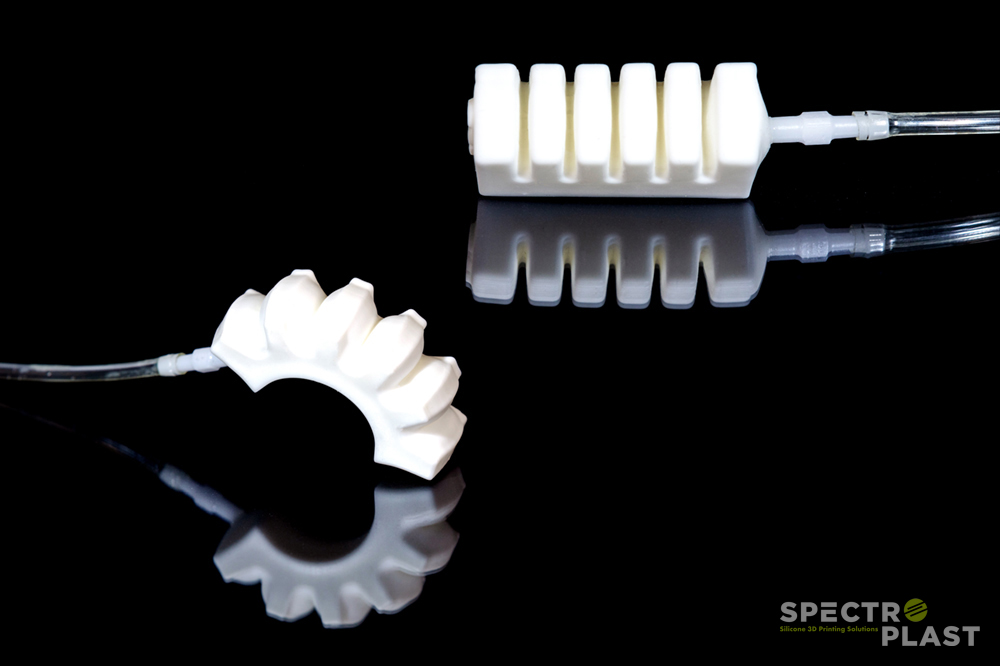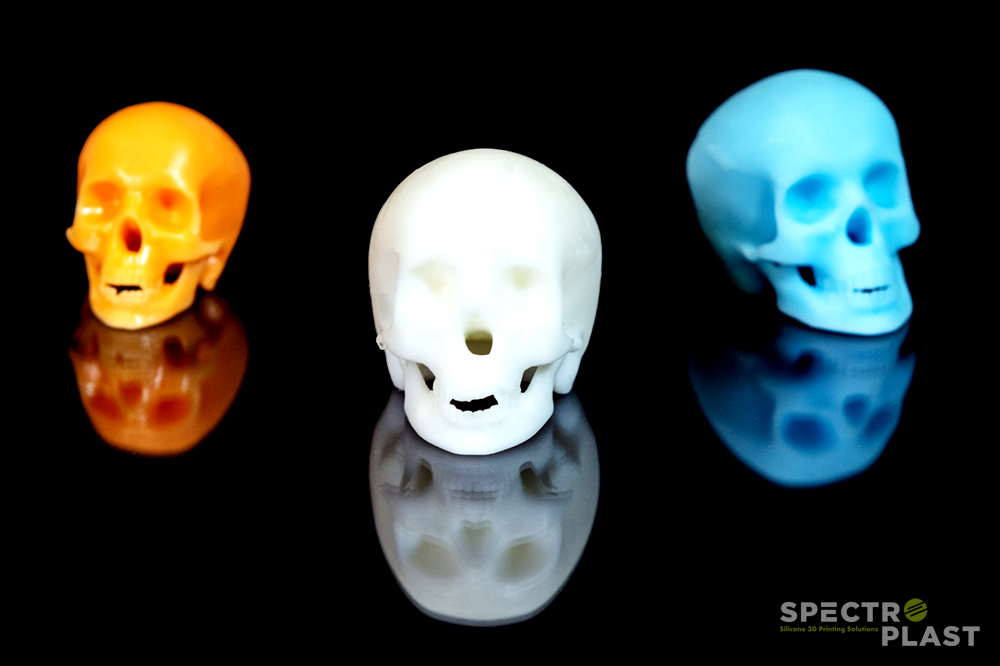Spectroplast AG is a Swiss silicone 3D printing service bureau. A startup and spin-out of ETH Zürich, Switzerland’s federal institute of technology, the company was founded in 2017.
With a patented material technology, Spectroplast uses SLA and DLP 3D printing to produce functional silicone parts with a quality comparable to, and exceeding, those made with injection molding.
Petar Stefanov, a graduate of the Department of Information Technology and Electrical Engineering at ETH Zürich, is co-founder of Spectroplast, and the company’s CTO. In this Q&A for 3D Printing Industry, Stefanov discusses proprietary materials, high-defintion 3D printing and how Spectroplast is addressing an important market niche.
3D Printing Industry: Why 3D printed silicone? Where do you see the demand?
Petar Stefanov, Spectroplast: Today, additive manufacturing is a well-known technology for materializing rigid objects such as metals, ceramics or plastics. But, when looking at what materials nature is employing, we realize that nature unbosoms an entire cosmos of soft materials that transform, morph, and self-heal.
It is precisely these soft materials that are not accessible to AM yet. Hence, we developed a silicone additive manufacturing platform to foster industrial implementation. With the world’s first high precision silicone AM technology, we can expand the range of printable materials from rigid to stretchable materials.
The demand for an alternative manufacturing process for silicone components is evident. The current market gap of 7-10% of the silicone components market consists mainly of rejected orders of low volume products and products with complex shapes, which are impossible to mold. Additive manufacturing is the perfect alternative manufacturing technology to bridge this gap. We then see a lot of new market potential for customized medical and life-enhancing products, starting at earphones and hearing aids to medical implants.

3D Printing Industry: What is unique about the service/materials provided by Spectroplast?
Petar Stefanov, Spectroplast: Our materials are compatible with SLA or DLP 3D printing technologies. This implies that silicone objects can now be directly fabricated with very high precision, straight out of a printer.
Conventionally, silicone components are fabricated by injection molding or casting that require molds, making the process lengthy and expensive. Direct fabrication allows circumventing the use of molds completely, cutting costs and lead time.
In addition, as we can use industry standard silicones, we most often develop the material jointly with the customer to exactly meet their requirements. So we not only produce customized products, but also use custom-tailored materials. In addition, we have developed silicones that cover a wide range of stiffness that we are expanding on a continuous basis.

3D Printing Industry: Was the formation of Spectroplast in response to any industry trends?
Petar Stefanov, Spectroplast: Given the described market gap to be met by additive manufacturing, founding Spectroplast AG was a natural response to meet current and future market trends.
We believe that 3D printing has the potential to shift focus from rapid prototyping to mass customization of functional products. We are very excited to introduce industrial-scale silicone additive manufacturing to many existing industries. In addition to this, we are excited to addressing new markets, for example in the wearables and hearables, soft robotics and customized healthcare industries.
3D Printing Industry: Is 3D printing at Spectroplast performed by a proprietary or existing technology/machine?
Petar Stefanov, Spectroplast: The main competence of Spectroplast is to develop new materials and make them accessible to additive manufacturing, as well as the processing of said materials with different additive manufacturing technologies.
We have protected intellectual property both on the materials, as well as on the process side. Currently, we use commercially available SLA machines for manufacturing. It is important that we tailor our materials to be compatible with the most prominent platforms to allow for speedy upscaling of our production capacity.

3D Printing Industry: What are your goals for the future of Spectroplast?
Petar Stefanov, Spectroplast: Our mission is to bring industrial-scale silicone additive manufacturing to the mass market. We are thrilled to address emerging customer requirements in high-value industries, such as aerospace and healthcare, and also very excited about making the technology accessible to everyone else.
Current applications range from very specialized industries in the field of soft robotics or damping applications, to the current automotive and aerospace industry, and to something as regular as the food and beverages sector that makes use of, for example, baking and cooking accessories.
We also envision a direct application of silicone AM in the entertainment industry for artistic and animatronic applications, for toys for children and adults.
A future rollout will target industries with life-enhancing and customized medical applications. This includes customized headphones and wearables, patient-specific hearing aids, customized shoe soles and similar outerwear or external products. In the future, we see applications in the field of fully customized healthcare products and patient-tailored medical implants.
We envision Spectroplast as the go-to player for additive manufacturing of soft and elastomeric materials and production of customized products in existing and new markets.
3D Printing Industry: Are you seeking partners within a particular industry?
Petar Stefanov, Spectroplast: Any partnerships within the mentioned industries, where silicone AM can provide innovative solutions and bring added value to the customer, are of highest interest to Spectroplast. For example, the silicone liquid injection molding industry is one of conventional practice where, already today, many manufacturing pain points can be overcome by silicone AM, while cutting costs and time. Therefore, we are seeking for established partners in various market sectors to jointly address the existing market gap as well as emerging markets.
For more exclusive news and interviews subscribe to the 3D Printing Industry newsletter, follow us on Twitter, and like us on Facebook.
Search and post 3D Printing Jobs for new opportunities in academia and industry.
Featured image shows a flexible, 3D printed silicone lattice. Photo via Spectroplast


